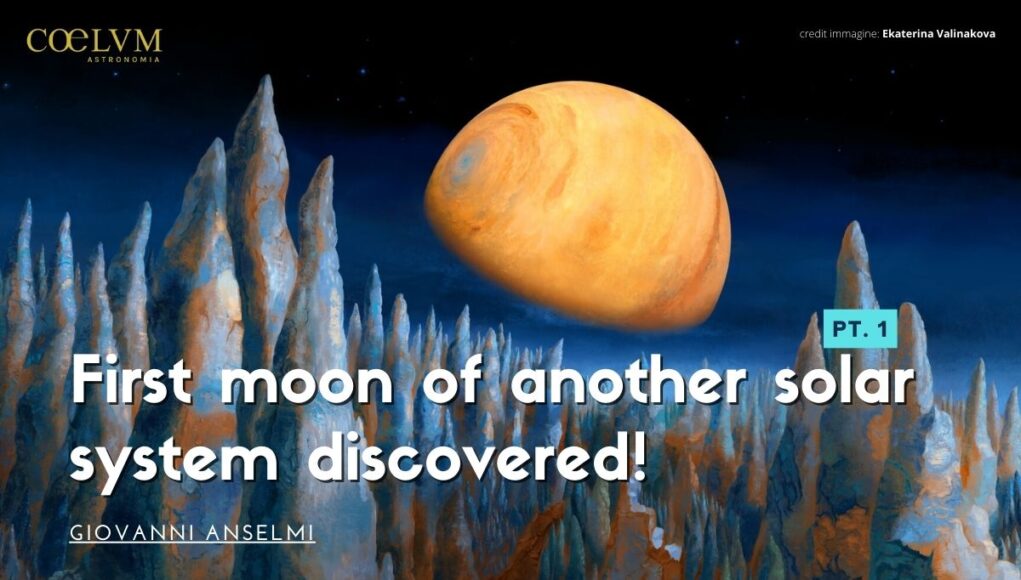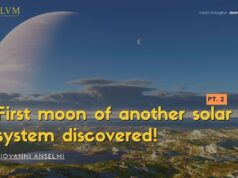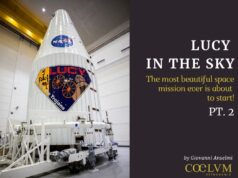Indice dei contenuti
Agreed, their existence is almost taken for granted: if there are so many exoplanets, why should not there be, as we do, a lot of exomoons orbiting around them?
To deny this obviousness would mean returning to the sin of anthropocentrism… But being able to “see” them is something else entirely: it is a challenge, an enterprise at the limit of current possibilities.
Yet the team led by David Kipping of Columbia University is convinced to have succeeded. The new candidate exomoon, if it really exists, is located 5700 light years from us, in the direction of the constellation of Cygnus, and is obviously a supermoon, ten times the size of ours.
A huge moon, therefore, that revolves around a Jovian-type planet. After all, in any survey, the first to be detected are usually the subjects out of the ordinary… the “big sizes“, simply because they are easier to detect with our current instrumentation.
Exomoons remain amongst the most elusive targets in observational astronomy.
Nevertheless, these worlds stand to provide an unprecedented window into the formation and evolution of planetary systems. If the Solar System is any guide, we can expect exomoons will be geologically active and diverse, with the potential for hosting atmospheres, and even life.
Smaller, normal exomoons will have to wait until the Webb Telescope is fully operational.
But let’s see how things went!
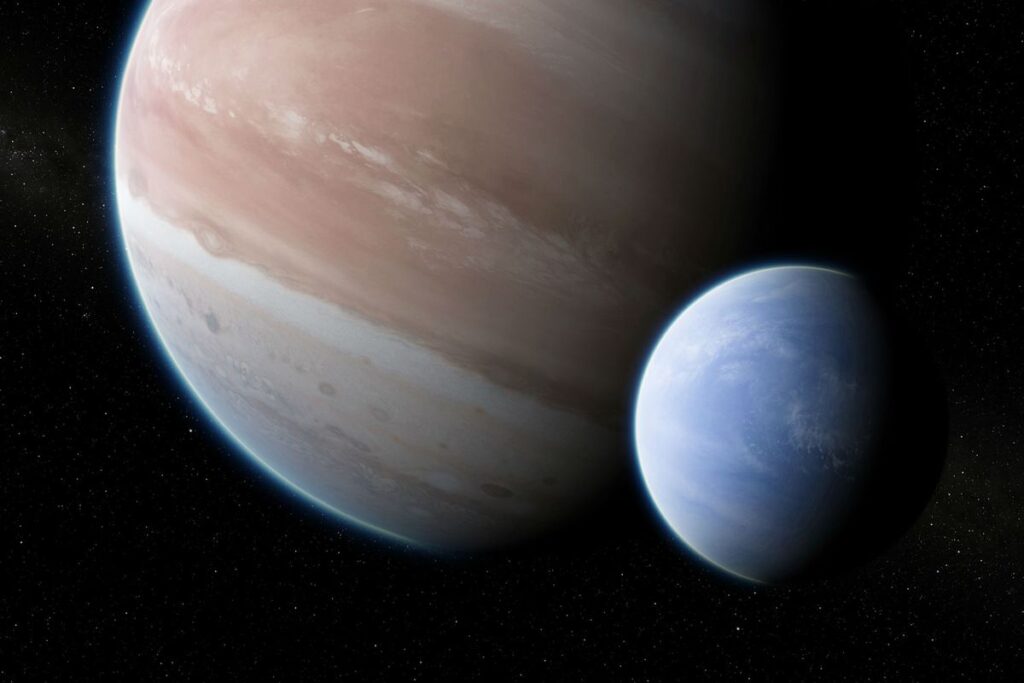
Over the past three decades, the search for and study of extrasolar planets has made great progress. To date, 4,927 have been discovered in 3,676 different planetary systems, with another 8,714 candidates awaiting confirmation.
The diverse nature of these planets, which according to their mass, size and position are classified as Super-Jupiter, Super-Earths, Mini-Neptune, Water-Worlds, etc., is raising many questions about the mechanisms that led to their formation and evolution.
And in this area has begun to play certain importance also the role played by the exomoons, in other words, the natural satellites of these planets.
In astronomy, it is known that the interest in a particular phenomenon or object begins to materialize when the technological growth of the instrumentation allows making the first reliable observations. This, in the specific case of exomoons, is happening in these years, mainly thanks to the observational data of space telescopes.
In addition, the search for exomoons satisfies the two deepest souls of astronomical research: astronomers who want to understand how the universe works and those who simply want to know if life is spread throughout the universe. And in both cases, the research and study of exomoons promise to reveal a great deal indeed.
For those who are more interested in physics, the search for exomoons can in fact provide a case study of whether the quantity and variety of moons in other solar systems is similar or different from our own.
When we look at the Moon, for example, we ask ourselves: was its formation (which probably occurred through a giant impact) a fluke of one chance in a trillion, or are we looking at the inevitable by-product of the formation of a planet like Earth? And what is the relationship between a planet’s mass and the quantity and mass of its moons?
Given the large number of moons present in the Solar System – more than 200, but only 17 with a diameter of at least 500 km -, it is indeed reasonable to assume that even among extrasolar systems moons are present in the same way. But we wonder: the number of moons can also influence the mass of the parent star, and therefore the distance of the planets, that in the case of a red dwarf would rotate around it at much shorter distances?
Also who is interested in astrobiology, would be very interested to have the answers to these questions.
The terrestrial, rocky planets are prime targets in the search for life, because some of them may be geologically and atmospherically similar to Earth. But the many giant gaseous planets identified so far may also hold surprises.
Although they are not the ones of interest themselves, Jupiter-like planets located in the habitable zone could in fact host rocky moons capable of providing a favorable environment for life, perhaps even better than that of Earth.
This is because they would receive energy not only from their star but also from the radiation reflected from the planet they orbit. Not to mention the endogenous heat developed by tidal forces similar to those induced by Jupiter on Io. There are several reasons why the exomoons, these small distant worlds, could be the key to finding life elsewhere in the universe.
Do you want proof of how important a moon could be to the rise of life? There’s the stark reality that life on Earth may not have happened at all without the starring role played by our own moon.
The Earth’s axis is tilted by 23.5 degrees relative to its motion around the sun. This tilt gives us seasons, and because this tilt is relatively small, seasons on Earth are mild: most places never get impossibly hot or unbearably cold. One thing that has been crucial for life is that this tilt has stayed the same for very long periods: for millions of years, the angle of tilt has varied by only a couple of degrees.
What has kept the Earth so steady? The gravity of our moon.
In contrast, Mars only has two tiny moons, which have negligible gravity. Without a stabilizing influence, Mars has gradually tumbled back and forth, its tilt ranging between 0 and 60 degrees over millions of years. Extreme climate changes have resulted. Any Martian life that ever existed would have found the need to continually adapt very challenging.
Without our moon, the Earth, too, would likely have been subject to chaotic climate conditions, rather than the relative certainty of the seasons that stretches back deep into the fossil record.
The gravity of the moon also produces the Earth’s tides.
Billions of years ago, the ebb and flow of the oceans produced an alternating cycle of high and low salt content on ancient rocky shores. This recurring cycle could have enabled the unique chemical processes needed to generate the first DNA-like molecules.
Unfortunately, despite thousands of exoplanets found and cataloged, the number of exomoons found and confirmed must be considered so far similar to a discouraging empty box.
Thanks to the resourcefulness of Columbia University professor David Kipping and an international team of astronomers, however, things have begun to change. Back in 2016, in fact, Kipping and his colleagues reported on the possible discovery of an exomoon found while examining data obtained with the Kepler Space Telescope. You’ll no doubt recall that the now-retired Kepler telescope spent nearly a decade in space looking for Earth-sized planets orbiting other stars, but scientists are still analyzing its data.
Launched in 2009 specifically for identifying exoplanets, Kepler was decommissioned by NASA in 2018 when it ran out of fuel needed for further science operations.
Kipping’s team also used the transit method to deduce the existence of a large moon the size of Neptune rotating around the gas giant Kepler-1625b, an exoplanet that itself revolves around a Sun-like star 8,000 light-years from Earth.
To know more: Kepler-1625 b (NASA)
And all this, thanks to the data bequeathed to us by the Kepler telescope, which was able to detect the slightest decrease in brightness in the light curve of a star when a planet passed in front of it, obscuring a small part of it.
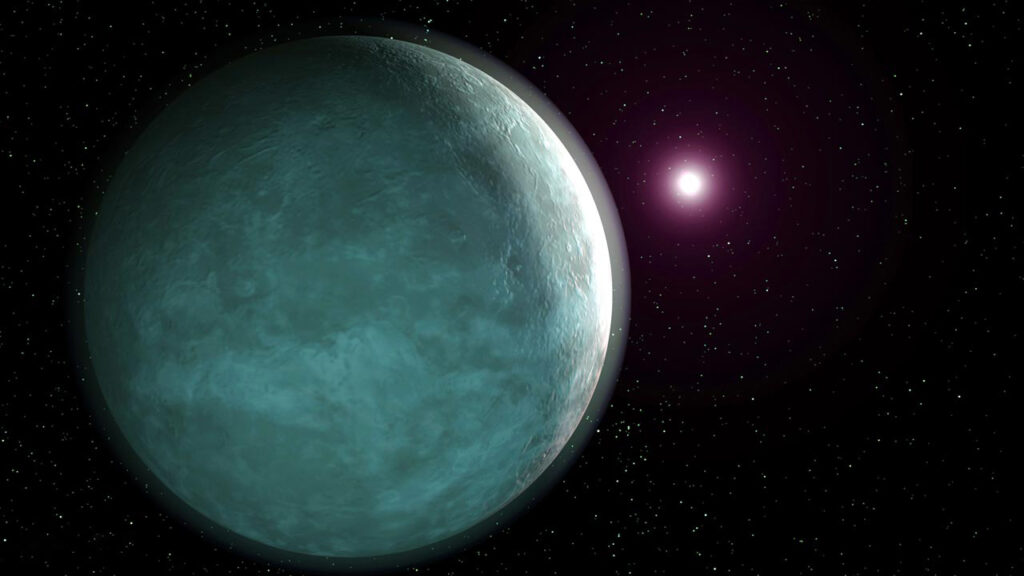
In the case of Kepler-1625b, astronomers then used Hubble, more powerful than Kepler, and in 2017 they found a secondary minimum 3.5 hours after the transit of the planet: an event that, according to Kipping, could be justified only by the presence of a large exomoon.
Discovering a dark exoplanet orbiting a dazzlingly bright star across lightyears of space is itself impressive enough; but detecting the presence of even tinier, unseen exomoons around these worlds is formidable.
The trick is to scrutinize the data gathered from transiting exoplanets: those that are detectable by the dip in starlight they cause as they pass in front of their star, from our point of view.







